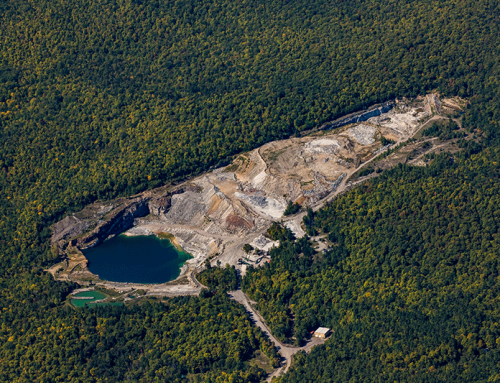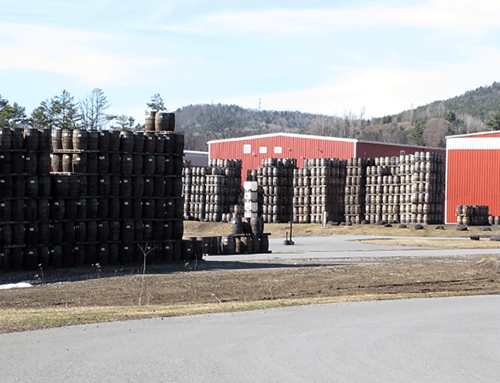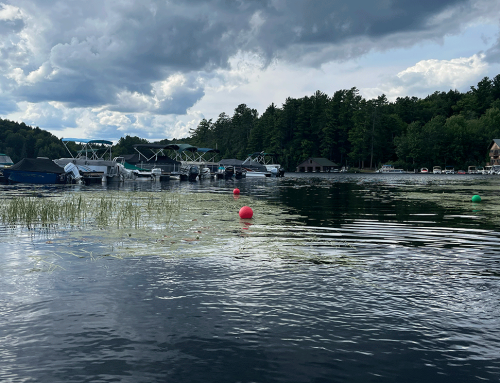The APA is set to vote on a new General Permit for clearcutting on Thursday February 14th. PROTECT has opposed this action because it loosens rules to make clearcutting in the Adirondacks easier for a large group of industrial forestland owners. PROTECT has shown that these lands have been heavily cut already (see below) and no these landowners want the ability to undertake large-scale clearcuts.
Read a full PROTECT account of the problems with this general permit at the Adirondack Almanack.
PROTECT teamed up with many other groups to submit a joint letter to Governor Cuomo and the APA and sent out a press release.

An example of heavy cutting on industrial forestlands in the northern Adirondacks. These lands have been heavily cut by strip clearcuts and patch clear cuts. Now the Adirondack Park Agency is working to loosen rules to permit large-scale clear cuts on such lands. PROTECT is concerned that lands already heavily harvested will see extensive large clearcutting.
In many ways the future of state conservation easement lands are on the line as the great majority of these lands would be opened for clearcutting. The process managed by the APA has been poor. It did no independent research and never provided a justification for relaxing clearcutting rules. The APA undertook this effort at the request of the large industrial forestland owners who have cut their lands hard and now want the ability to undertake large-scale clearcuts for their silvicultural purposes.
APA’s legal work to rush through this General Permit is deeply flawed
The APA issued a negative declaration under SEQRA for the General Permit. This is an action under SEQRA (the State Environmental Quality Review Act) where applicants or government bodies define publicly the potential impacts of its action. In issuing a Neg Dec a project sponsor makes a declaration that its project will have no negative impacts. A Pos Dec, or positive declaration, signifies the possibility of a negative impact caused by the project and an Environmental Impact Statement (EIS) that details the potential impacts and planned mitigation would follow.
In issuing the Neg Dec here, the APA stated definitively that it does not expect any negative impacts from large-scale clearcutting and no EIS is necessary. Really?
This Neg Dec contains many significant errors. Lets look at them.
In the Environmental Assessment Form (EAF), which is part of the Neg Dec, the APA answered “No” or “NA” (Not Applicable) to a variety of questions. It’s informative to review this EAF because some of the APA’s answers are truly stunning and reveal a willful determination to put on blinders to potential impacts in order to rush this General Permit to approval.
In the EAF, the APA answered “>25 acres” to a question about “total acreage of project area.” In reality, this General Permit will likely affect more than 1 million acres. That the APA issued a Neg Dec for an action that could affect over 1 million acres has to be some kind of record for the largest Neg Dec in state history.
On the question to whether the proposed action is “contiguous” to “sites” “listed on the national register of historic places” the APA answered “NA.” This is puzzling because the National Register of Historic Places lists the Adirondack Forest Preserve. This was done in 1966. The Forest Preserve shares hundreds of miles of boundaries with lands likely to be clearcut. In fact, pictures of strip cuts, checkerboard patch cuts, and small clearcuts posted on PROTECT’s website show many of these cuts to forests that border Forest Preserve.
There were some other beauties too.
To the EAF question as to whether “hunting or fishing…opportunities presently exist in the project area” the APA answered “NA.” Many conservation easement lands allow public hunting and fishing rights. Many lease hunting and fishing rights. Clearcutting has been found to be detrimental to certain wildlife. But the APA says NA.
The EAF answered NA to the question as to whether these lands are used for “open space recreation” yet a number of easements include various public recreation rights, including hunting, fishing, snowmobiling, mountainbiking, etc.
On the questions of how many acres of “vegetation (trees, shrubs, ground cover) will be removed from the site” APA answered “>25 acres.”
Whether “lakes, ponds or wetlands” are contiguous to the project? NA. Whether the project area is known to include important scenic views? NA. Whether the project area has unique geologic formations? NA. Is the project area contiguous to critical environmental areas? NA. Is the project site located over an aquifer? NA. The list goes on.
The APA’s failure to identify even a single adverse environmental impact from the proposed clearcutting General Permit, or to acknowledge that there was public controversy related to the action, signals that the APA failed to take the required “hard look” at the environmental impacts of the General Permit and that it failed to provide a coherent rationale for a negative declaration.
The APA should rescind the negative declaration that it issued for the proposed General Permit for clearcutting, and it should conduct a new environmental assessment of this action. A positive declaration is more appropriate. Once a positive declaration is issued, the APA should then prepare an Environmental Impact Statement (EIS) because the proposed General Permit has the potential to have at least one significant adverse environmental impact, if not many.
A better way forward for the APA and the Adirondack Park
The APA should put the brakes to this General Permit. A better process, which will produce a better outcome, is to focus on the APA’s rules and regulations that govern forest management in the Adirondack Park. These rules are outdated. The APA has in its past successfully managed a public process to review and revise its rules and regulations. It should do so again for its outdated forest management regulations. The problems facing forest managers could be solved through an open and transparent fact-finding process that works to revise the APA’s rules and regs.
This is the path the APA should take.





